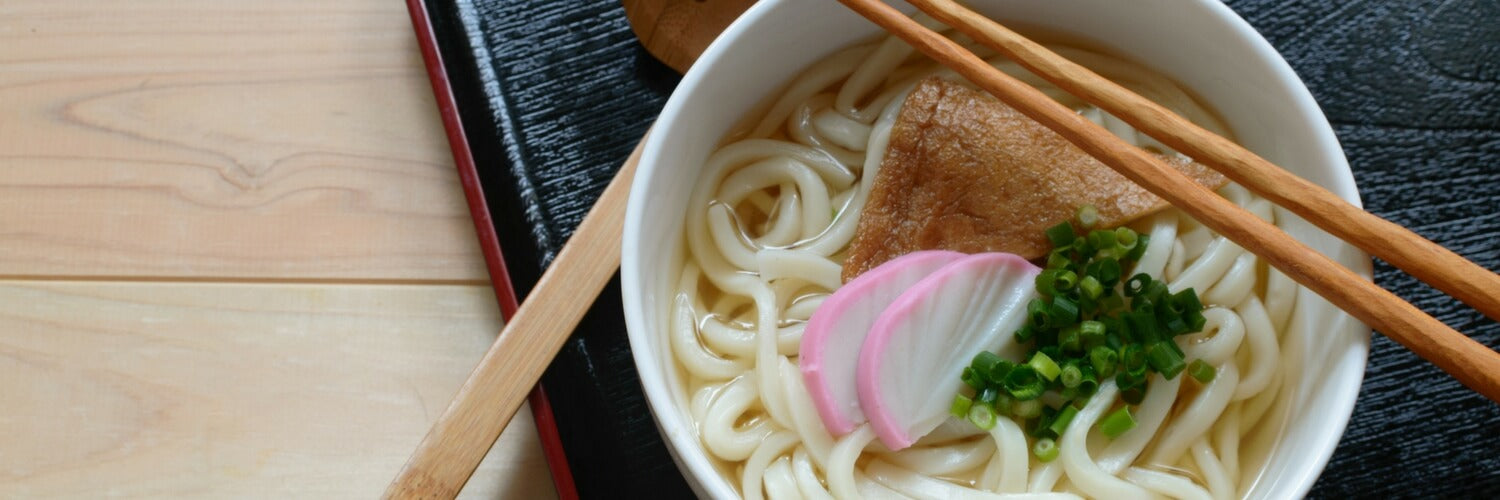
One of the most popular types of noodles to enjoy in Japanese cuisine is udon noodles. Made from wheat flour, salt and water, these thick, chewy noodles are very comforting and can be used in a wide variety of dishes, served hot or cold.
Noodles are a large part of Japanese cuisine. One of the most popular noodles to enjoy in soups or stir-fries is udon noodles. These are thick noodles made from water, wheat flour and a bit of salt. They tend to be a bit softer than other noodles when cooked, have a mild flavor and are slightly chewy. Although they are also rather light, when added to soups or stews they make a great comfort food.
In many Japanese restaurants, udon noodles are typically served in a broth. The noodles easily absorb the flavors of the broth, serving to increase the umami experience of the meal. Other ingredients can be added to the broth, such as various vegetables, braised beef or a raw egg placed on top. Udon noodles can also be served cold with various vegetables and dressings.
Finding and Preparing Udon Noodles
As udon noodles are a very popular type of noodle, they are not very difficult to find. The International aisle of many supermarkets will likely have udon noodles. If you are lucky, you can even find them fresh in some grocery stores. Of course, Asian grocery stores will have a large supply of fresh and dried udon noodles.
Udon noodles are easy to cook; placing them in boiling water for a few minutes is usually all it takes. However, because there are different kinds of udon, it is best to follow the specific instructions on each package for specifics. You can also try cooking them in dashi, chicken broth or beef broth to impart more flavor.
The Traditional Way to Enjoy Udon Noodle Dishes
As mentioned, there are many culinary uses for udon noodles. From stir-fries to curries to soups to chilled dishes to hotpots to sauces that you dip udon noodles into, the versatile noodle pairs well with many Japanese flavors. Toppings and dressings such as nori, grated ginger, sesame seeds and others often serve as tasty seasonings.
Regardless of how the udon noodles are prepared and served, it is tradition to slurp your noodles when eating them. There are quite a few reasons for this; the most common explanation is that it lets others know you are enjoying your meal. However, slurping the noodles also serves to cool hot noodles as you are eating them. It also enhances the dining experience through auditory means.
Health Benefits of Udon Noodles
For starters, udon noodles are extremely comforting; they are easy to digest, and a hot bowl of udon noodles in a flavorful broth is a great dish when you’re feeling ill. They also contain complex carbohydrates, which help to improve weight loss, as well as reduce the risks of various heart diseases and type 2 diabetes.
The high fiber content of udon noodles also serves to reduce the risk of colorectal cancer, and the high amount of B vitamins contained in the noodles helps to keep you energized.
Additional vitamins and minerals contained in udon noodles include thiamine and niacin, both vital for reducing stress and improving circulation, respectively.
So the next time you see udon noodles on the menu or for sale in the marketplace, consider getting yourself a dish and enjoying a great, healthy meal!
